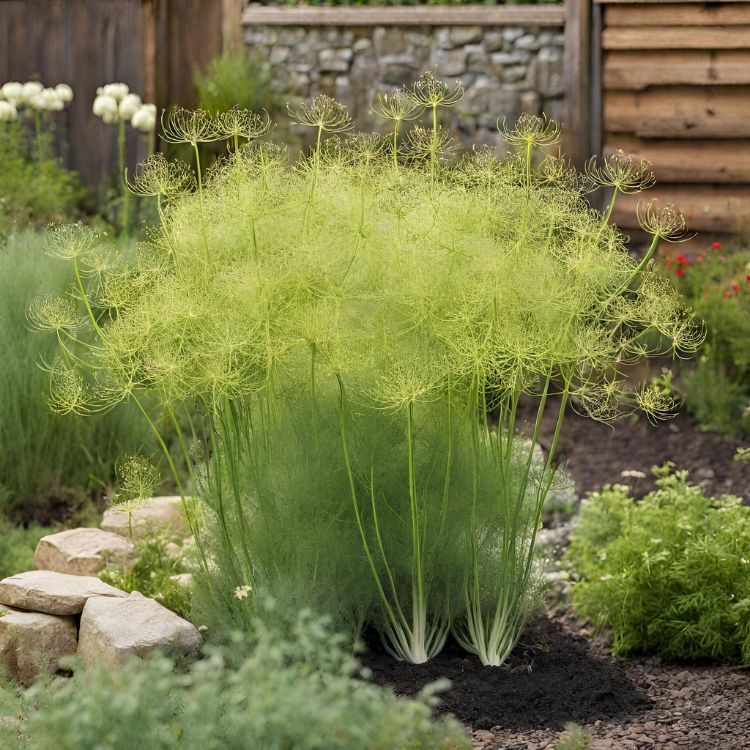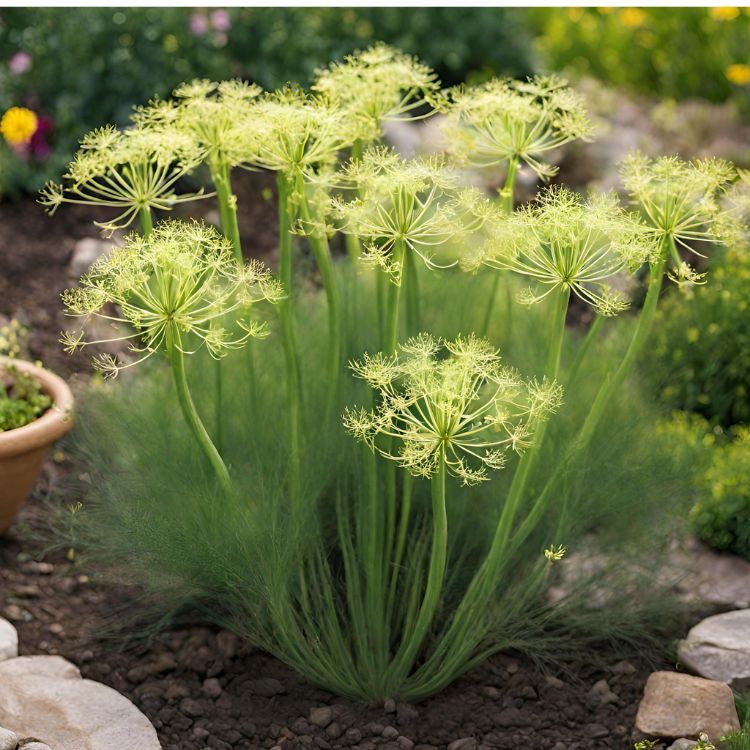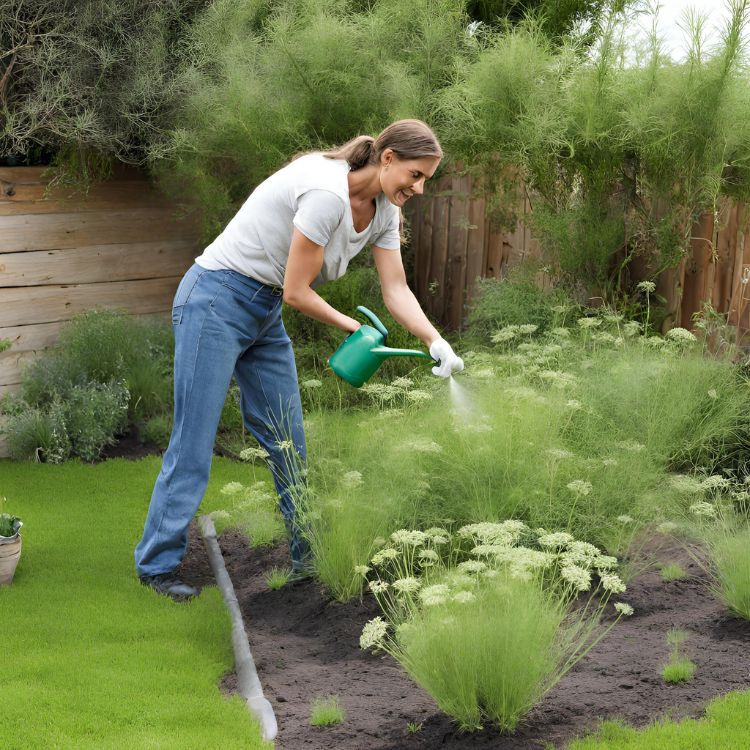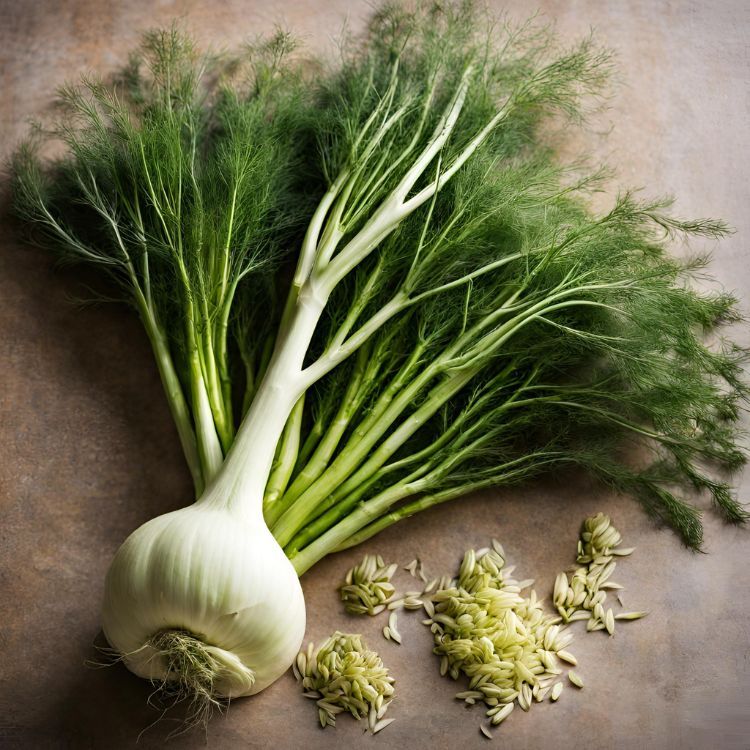
Key Takeaways
- Florence fennel adds a sweet, anise-like flavor to dishes and is easy to grow.
- Start with high-quality seeds and choose a sunny spot with well-draining soil.
- Plant seeds after the last frost, spacing them 12 inches apart.
- Keep the soil moist and thin seedlings to prevent overcrowding.
- Harvest fennel bulbs when they are roughly the size of a tennis ball for the best taste.
Discover the Aromatics of Florence Fennel
Imagine stepping into your garden and being greeted by the delicate, licorice-like aroma of Florence fennel. This perennial herb, with feathery green leaves and vibrant yellow flowers, is more than just a pretty face. It’s a culinary delight that brings an adventurous twist to your kitchen and a must-have in any survival garden.
Characteristics of Florence Fennel
Let’s get acquainted with this aromatic wonder. Florence fennel, known scientifically as Foeniculum vulgare var. azoricum, is not your average herb. Unlike its cousin, the common fennel, this variety develops a luscious, bulb-like base that’s sought after for its crunchy texture and sweet flavor. With stalks that can grow up to five feet tall and leaves that resemble dill, it’s a striking addition to any garden space.
Most importantly, every part of the Florence fennel plant is edible. The bulb, stalks, leaves, and seeds all find their way into a variety of dishes, from salads to soups. Because of its versatility, growing Florence fennel means you’ll have a multi-purpose plant right at your fingertips.
Why Florence Fennel is Essential in Your Garden
But why include Florence fennel in your survival garden? Firstly, it’s resilient. Once established, it can tolerate short periods of drought. Plus, it’s a perennial, meaning once you plant it, you can expect it to return year after year with the right care. This makes it a reliable source of food and flavor in times of need.
Additionally, fennel has been used for centuries, not just in cooking but also for its medicinal properties. It’s known to aid digestion, reduce inflammation, and even soothe a sore throat. Therefore, it’s not just a food source; it’s a natural remedy.
Starting Your Fennel Journey

Embarking on your fennel-growing adventure is easier than you might think. Here’s how to get started.
Choosing the Right Seeds for Your Climate
Fennel thrives in warm, sunny climates, but it can also adapt to cooler environments. The key is choosing seeds that are suited to your specific growing conditions. For those interested in permaculture techniques for arid lands, understanding permaculture techniques can be particularly beneficial. Look for high-quality, non-GMO seeds from reputable suppliers like Survival Essentials, which you can find at Survival Essentials’ online store.
Soil Preparation and Fennel’s Ideal Conditions
Fennel isn’t too picky, but it does love well-draining soil and a good amount of sunlight. Choose a spot in your garden that receives at least six hours of direct sunlight a day. Before planting, enrich the soil with compost or well-rotted manure to give your fennel plants the best start. The soil pH should be between 6.5 and 7.0, which is just slightly acidic to neutral.
Ensure the soil is loose and free from large clumps or stones that could hinder the growth of the bulb. Keep in mind that fennel can grow quite tall, so consider its placement so as not to shade out other sun-loving plants in your garden.
Sowing Seeds for Success
With your seeds selected and your soil prepared, it’s time to sow.
The Perfect Time to Plant Florence Fennel
Fennel seeds should be planted after the last frost date in your area. This plant doesn’t take kindly to freezing temperatures, so timing is crucial. In most climates, this will be in the spring, but in warmer regions, you might be able to do a fall planting as well. For more details on survival gardening essentials, including the best planting times for various heirloom seeds, check out our comprehensive guide.
Mark your calendar, because planting at the right time can make all the difference in the success of your fennel crop.
Sowing Techniques for a Bountiful Harvest
When it’s time to plant, follow these steps to ensure a generous harvest:
- Space the seeds about 12 inches apart to give each plant enough room to develop.
- Sow the seeds directly into the soil at a depth of about 1/4 inch.
- Water gently but thoroughly after planting to settle the soil around the seeds.
- As the seedlings grow, thin them out so that only the strongest remain.
By giving each fennel plant enough space to thrive, you’ll be rewarded with bigger, more flavorful bulbs. For more guidance on maximizing your garden’s yields, consider exploring additional urban survival gardening tips.
Caring for Your Growing Fennel Plants

After you’ve sown your fennel seeds, the real fun begins. Tending to your fennel plants is a gratifying experience, especially when you see those feathery fronds start to flourish. But remember, a little attention goes a long way in ensuring the health and productivity of your plants. For best results, consider integrating insect and worm integration into your soil health strategy.
Watering and Weeding: Essential Maintenance Tips
Keep the soil consistently moist, especially during dry spells. Fennel doesn’t like to dry out, so water regularly, aiming for at least 1 inch of water per week. Mulching around your plants can help retain moisture and keep the soil cool.
Weeds can compete with fennel for nutrients and water, so it’s important to keep your garden bed weed-free. Gently hand-pull any weeds that pop up, taking care not to disturb the fennel’s roots. Besides that, a tidy garden bed will also prevent pests and diseases from taking hold.
Dealing with Pests and Diseases Naturally
Fennel is fairly resilient, but like any garden plant, it can encounter pests and diseases. Aphids and whiteflies might be attracted to the sweet sap, while root rot can occur in overly wet conditions. To handle these challenges:
- Inspect your plants regularly for signs of pests, and if you spot any, use a strong blast of water from a hose to knock them off.
- Encourage beneficial insects like ladybugs and lacewings, which prey on common pests.
- Avoid overhead watering to keep the foliage dry and reduce the risk of fungal diseases.
- If root rot is a concern, ensure proper drainage when preparing your garden bed.
By employing these natural methods, you’ll keep your fennel healthy without the need for chemical pesticides or fungicides.
Harvesting Your Fennel Plants
The moment you’ve been waiting for has arrived: it’s time to harvest your fennel. This stage is as rewarding as it is delicious!
Recognizing the Signs of Maturity in Florence Fennel
Florence fennel bulbs are ready to harvest when they are about the size of a tennis ball. The base should be pale green and firm to the touch. Ideally, you want to harvest fennel before it starts to bolt, or send up a flower stalk, as this can make the bulb tough and less flavorful.
Keep an eye on your plants as they grow, and when they reach the right size, get ready to enjoy the fruits of your labor.
Harvesting Techniques for Maximum Flavor
Harvesting fennel is straightforward. Use a sharp knife to cut the bulb from the root at soil level. Be sure to leave the root in the ground if you want the plant to regrow and produce more fronds and seeds.
Handle the bulbs with care to avoid bruising them, which can affect their flavor. After harvesting, you can trim the stalks and fronds, but don’t throw them away – they are flavorful additions to many dishes.
From Garden to Kitchen: Using Your Fennel

Once you’ve harvested your fennel, it’s time to bring it into the kitchen and onto your plate.
Incorporating Fennel into Your Cooking
Fennel’s anise-like taste makes it a versatile ingredient. You can:
- Slice the bulb and add it to salads for a crisp, refreshing bite.
- Caramelize it in a pan with a little olive oil for a sweet and savory side dish.
- Use the fronds as a delicate herb garnish or incorporate them into sauces and dressings.
- Toast the seeds and sprinkle them over bread, pastries, or savory dishes for an extra burst of flavor.
Whether you’re a seasoned chef or a kitchen novice, fennel’s unique taste will inspire you to create aromatic culinary masterpieces.
Preserving Fennel for Long-Term Enjoyment
After you’ve harvested your fennel, you might wonder how to keep it fresh. The good news is, fennel can be preserved in a few different ways:
- Refrigerate the bulb wrapped in plastic for up to two weeks.
- Freeze the bulb by first blanching it for a few minutes, then placing it in an airtight bag.
- Dry the fennel fronds and seeds, then store them in airtight containers away from light.
These methods ensure that you can enjoy the flavor of fennel long after the harvest. Plus, dried fennel seeds can be used for planting next season, making your garden a sustainable cycle of flavor and nourishment.
Remember, the key to preserving the unique taste of fennel is to handle it gently and store it properly. This way, you can enjoy the fruits of your labor throughout the year.
And there’s something incredibly satisfying about using ingredients you’ve grown yourself, isn’t there? Whether it’s in a hearty winter stew or a refreshing summer salad, fennel brings a touch of your garden to every meal.
FAQ: Growing and Using Florence Fennel
You’ve got questions, I’ve got answers. Here’s a quick rundown of some frequently asked questions about growing and using Florence fennel:
Can Florence Fennel Survive Winter Temperatures?
Florence fennel is a bit more delicate when it comes to cold temperatures. It prefers milder climates and may not survive harsh winters outdoors. However, you can protect it with mulch or consider growing it in a container that can be moved indoors during colder months.
How Often Should I Water My Fennel Plants?
Fennel enjoys consistent moisture, so aim to water your plants once or twice a week, depending on rainfall and temperature. The goal is to keep the soil evenly moist but not waterlogged. Adjust your watering schedule as needed to prevent the soil from drying out or becoming too soggy.
Is Florence Fennel Prone to Any Specific Pests?
While fennel is relatively pest-resistant, it can attract aphids and whiteflies. Keep an eye out for these pests and manage them promptly to prevent them from affecting your crop. Encouraging natural predators, such as ladybugs, can help keep pest populations in check.
What Are the Health Benefits of Florence Fennel?
Fennel is not only delicious but also packed with nutrients. It’s a good source of vitamin C, dietary fiber, potassium, and antioxidants. It has been traditionally used to aid digestion, relieve bloating, and even soothe a sore throat.
Can You Regrow Fennel from Scraps?
Yes, you can! If you have a fennel bulb with the base intact, you can place it in a shallow dish of water and it will start to sprout fennel fronds. This method won’t produce a new bulb, but you’ll get a continuous supply of fresh fennel greens for your kitchen.
Now, with all this knowledge at your fingertips, what are you waiting for? Get out there and start planting some Florence fennel in your garden. Not only will it add a burst of flavor to your meals, but it will also bring a sense of pride to your table, knowing you grew it yourself. And if you’re looking to stock up on high-quality, non-GMO fennel seeds for your survival garden, be sure to check out the selection at Survival Essentials. For more insights on how heirloom seeds can make a difference in your gardening efforts, explore the benefits of heirloom seeds for a robust survival garden. Happy gardening!






